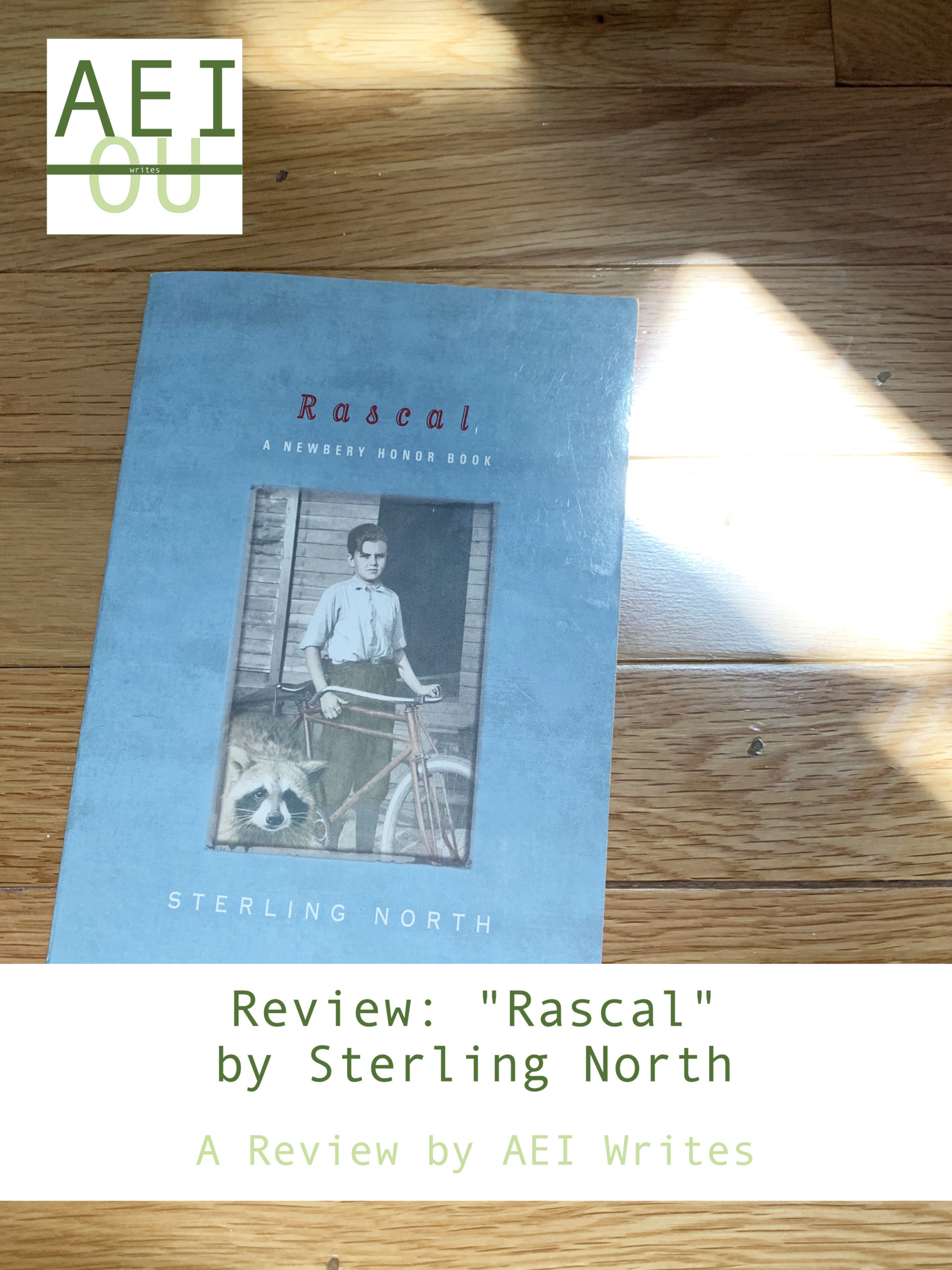My fourth grade teacher gifted our class copies of Rascal for Christmas that year. It took me awhile to get into the story. The story stayed in my brother’s head far longer than it stayed in mine. Fifteen-some-odd years later, I grabbed it from my parents’ shelves and added it to a pile of children’s books to borrow. Looking through the stack, my brother turned and asked me, “Are you just trying to be depressed?” Yet, as a Newberry Honor book in the age range I’m trying to write for, I figured I should reread it. So, let’s see how Rascal by Sterling North appeals to readers almost a century after it occurs.
A Memoir by Sterling North

First and foremost, my Scholastic copy of Rascal did not include the words “memoir” or “nonfiction” anywhere on the cover. In fact, only a note from the author on the copyright page indicates that the events in the book actually happened. I almost wish I had known the story was real when I read it the first time. I would have better understood the meandering plot line and thick descriptions. Or, perhaps I’m reading too much of my college education into my nine-year-old self.
Regardless of the fact I read the book as fiction when I was a child, the hefty vocabulary and proper writing style left me amazed I understood anything that happened in the book back then. As Madeleine L’Engle explains, I must have read around an awful lot that I didn’t get as a kid. In fact, the only reason I saw this book getting published under “children’s literature” instead of the adult-geared “memoir” came from its narrator being only 11 years old. Take out the occasional illustrations, and Rascal could have matched the style of any of the grown-up memoirs on my shelf. I must give the author credit for believing in the imagination and understanding of children.
Faith in Rascal

To predominately follow the growth and and exploits of a pet raccoon, Rascal covers some heavy-hitting subjects. Because the author’s mother died when he was seven, Sterling debates the question of good and evil at an early age. His family’s interest in biology lends them to more progressive views of God creating the Earth. Sterling’s older brother fights in World War I, and the whole town responds to a war-driven economy. Add to that the global Spanish Influenza, and readers see an eerie foreshadowing of this year’s COVID-19. Lastly, the meat and fur industry clash sharply with Sterling’s growing love for his pet raccoon.
Despite heavy subject matter, North gently exposes his readers to the topics. Young Sterling stumbles into these grandiose events between fishing trips and parades, and so do readers. The warmth and freedom of summer softens the fears of war. The generosity of townspeople counters the greed and anger of neighbors. Thanks to his youth, Sterling mostly observes. Those observations gradually build to beliefs and morals as the book continues.
More than the quality of writing, I believe Rascal excels in demonstrating respect for God’s creation. North respects both the complexity of his fellow imperfect humans and the marvelous qualities of animals. While the book’s flow may not be for everyone, I do recommend Rascal as a beautiful testament to the glory of God’s creation.

